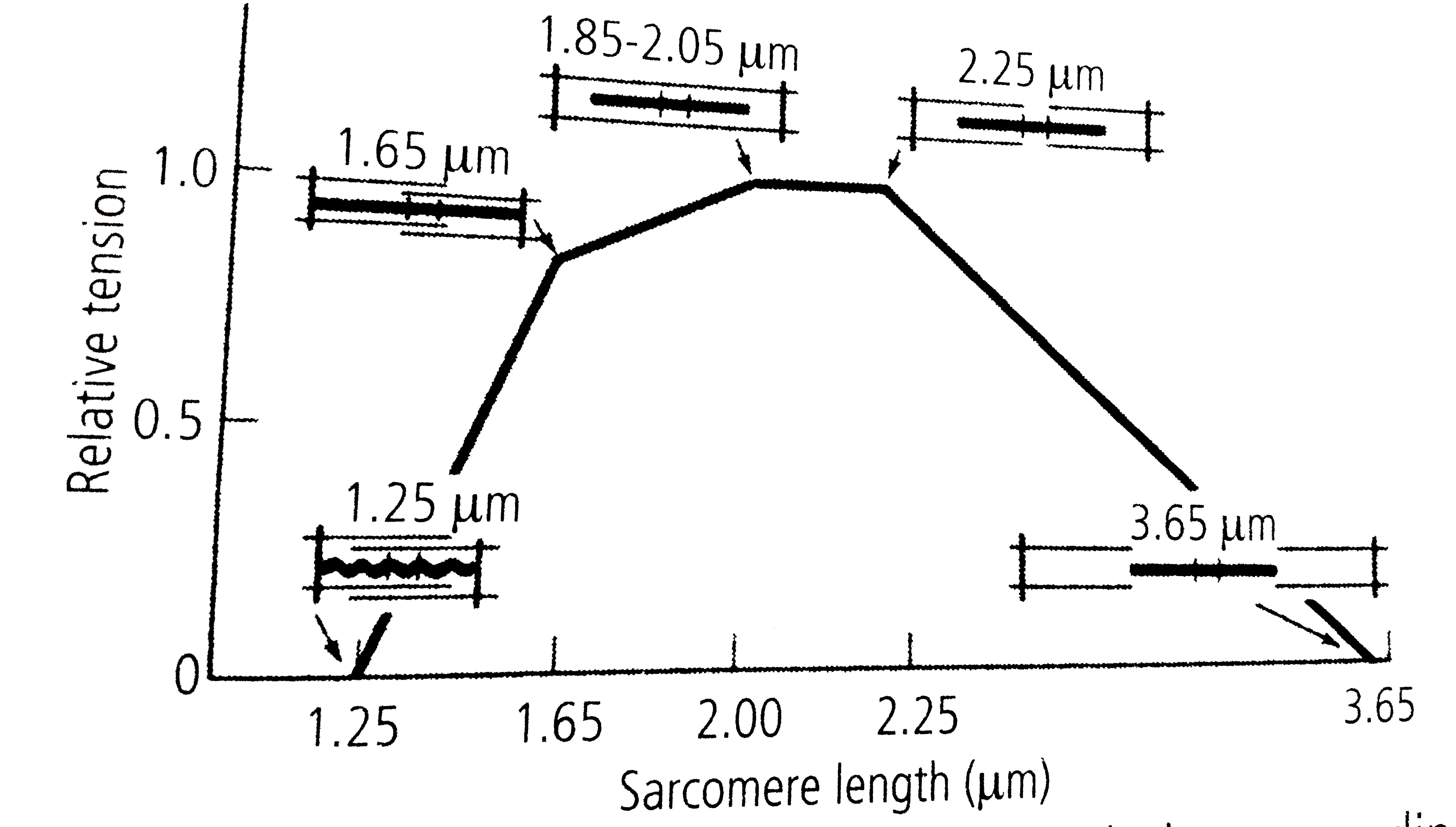What happens to the l band and H zone during contraction? Do the lengths of the thick and thin filaments change ?
They disappear, no.
Topper's Solved these Questions
- BOOK - ICSECHAPTER - LOCOMOTIONA ND MOVEMENT EXERCISE - TEST YOUR PROGRESS ( SHORT/LONG ANSWER TYPE QUESTIONS )31videos
LOCOMOTIONA ND MOVEMENT
- BOOK - ICSECHAPTER - LOCOMOTIONA ND MOVEMENT EXERCISE - TEST YOUR PROGRESS ( HIGHER ORDER THINKING SKILLS QUESTIONS (HOTS))9videos
LOCOMOTIONA ND MOVEMENT
- BOOK - ICSECHAPTER - LOCOMOTIONA ND MOVEMENT EXERCISE - TEST YOUR PROGRESS ( OBJECTIVE TYPE QUESTIONS ) (State whether the following statements are true or false .)17videos
LOCOMOTIONA ND MOVEMENT
- BOOK - ICSECHAPTER - LOCOMOTION AND MOVEMENTEXERCISE - LONG ANSWER TYPE QUESTIONS14videos
LOCOMOTION AND MOVEMENT
- BOOK - ICSECHAPTER - MINERAL NUTRITION EXERCISE - NCERT EXERCISE WITH ANSWER (DIFFERNTIATE BETWEEN )9videos
MINERAL NUTRITION
Similar Questions
Knowledge Check
- Question 1 - Select One
The given graph shows length-tension curve for a typical vertebrate sarcomere.

By analysing the graph, what can you deduce regarding the muscle contraction?
(i) Neither the myosin filaments nor the actin thin filaments change in length when a sarcomere shortens or is stretched. Instead, it is the extent of ocerlap between actin and myosin filaments that changes.
(ii) The total tension produced by a sarcomere is proportional to the total number of cross-bridges that can interact with actin filaments, and this number in turn is proportional to the amount of of overlap between thick and thin filaments.
(iii) The tension produced by the muscle is maximal when the overlap between thick and thin filamentss allows the largest number of myosin cross-bridges to bind to actin.
(iv) Tension drops off with increased lenght, because the thick and thin filaments overlap less and fewer cross-bridges can bind.
Tension drops off with decreased length, because thin filaments at the two ends of the secromere begin to collide with each other, preventing further shortening.A(i) OnlyB(i),(iii) and (iv)C(i),(iii),(iv) and (v)D(i),(ii),(iii),(iv) and (v) - Question 2 - Select One
Consider the following four statements (i)-(iv) and select the correct option.
(i) Actin is present in thin filament.
(ii) H-zone of striated muscle fibre represents both thick and thin filaments.
(iii) There are 11 pairs of ribs in man.
(iv) Sternum is present on ventral side of the body.A(i)(ii)(iii)(iv)FFTFB(i)(ii)(iii)(iv)FFFTC(i)(ii)(iii)(iv)TFFTD(i)(ii)(iii)(iv)TFTF
What happens to ribs and sternum during contraction of external intercostal muscles ?
View SolutionRead the following statements (A to D) and select the one option that contains both correct statements.
A. Z-line is present in the centre of the light band.
B. Thin filaments are firmly attached to the M-line.
C. The central part of thick filaments, not overlapped by thin filaments is called Z-band.
D. Light band contains only thin filaments.View SolutionDuring contraction, what changes would you expect to see in the various lines, bands, and zones of the sarcomere, on the basis of the sliding filament hypothesis?
View SolutionWhat happens to the length of the A, H and I bands as the sarcomere contracts?
View SolutionTrue and False statements :
H-zone of striated muscle fibre represents both thick and thin filaments. (T/F)View SolutionDetermine what happens to the double slits interference pattern if one of the slits is covered with a thin, transparent film whose thickness is λ2(μ−1), where λ is the wavelength of the incident light and mu is the index of refraction of the film.
View Solution

